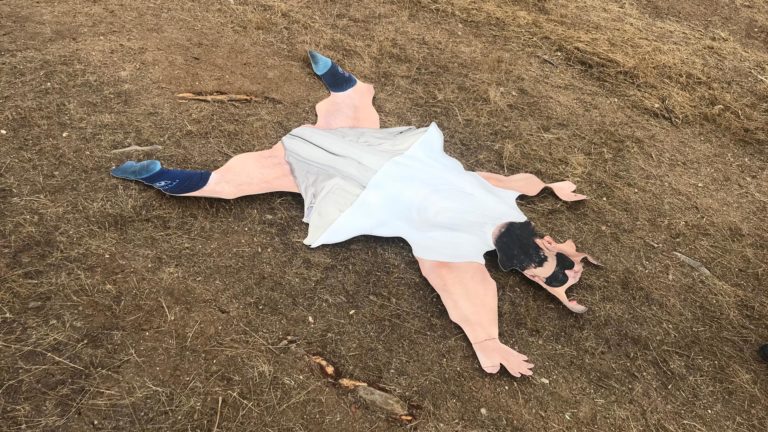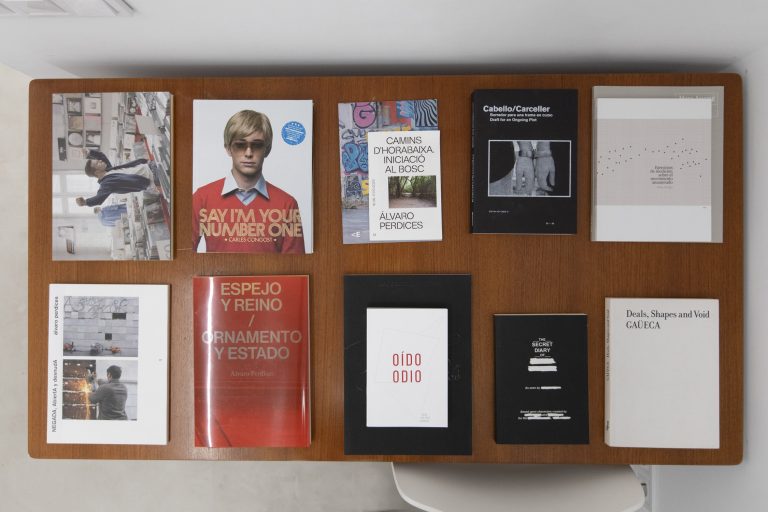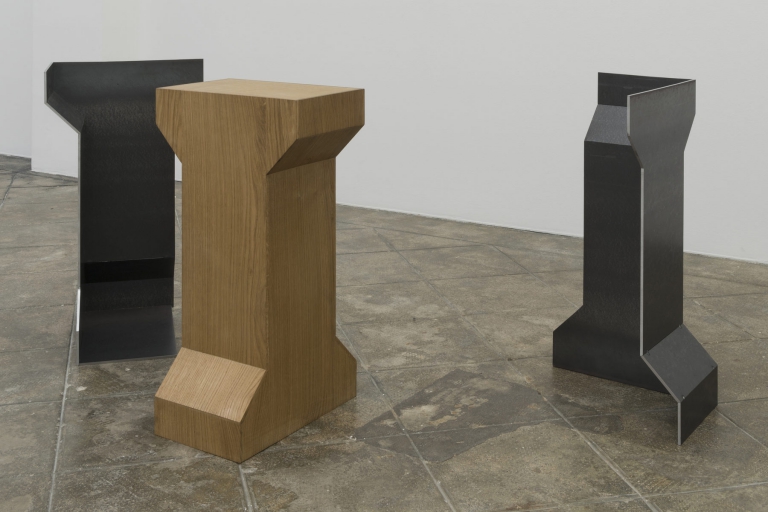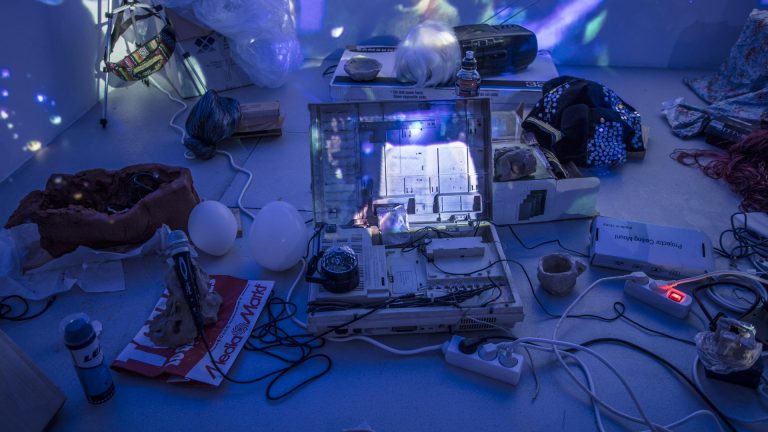Artist: Rubén Grilo with Robert M. Ochshorn
Exhibition title: Erres
Curated by: Marc Navarro
Venue: Lo Pati – Centre d’Art, Terres de l’Ebre, Amposta, Spain
Date: June 1 – July 24, 2022
Photography: all images copyright and courtesy of the artists and Lo Pati – Centre d’Art
In his works Rubén Grilo employs a variety of means to intervene in the structures of enunciation and reception that drive a given activity, such as producing works of art, reading, or visiting an exhibition. In revisiting these structures Grilo exposes the mechanisms that allow us to give value, construct meaning and modulate an experience.
In Erres and in other previous projects, the exhibition is defined through seemingly simple operations that provoke a distortion. Grilo understands the exhibition as a space of exception that makes it possible to stage a rupture, to alter the formulas of mediation and to reveal the codes that we, as artists or spectators, adopt and tacitly reproduce. In Erres this reversal is clearly manifested in the apparent emptiness of the interior space of the art centre and in the concentration of sculptures on the outside of the building. Through this dislocation Grilo challenges the distinction between container and content, but also the notion of spatial efficiency. This sequence not only tests our expectations of the exhibition, but also a museography tradition that gives a preferential role to stagnant spaces and restricts the possibilities of interference between strictly artistic discourses and other discourses.
Inside Lo Pati we find Progress Barks, a sound project that Grilo has developed in collaboration with software researcher Robert M. Ochshorn. The title of the piece plays with the similarity between the words bark and bar highlighting the strangeness of linear progress when applied to the latter instead of the former. For some years now, Ochshorn has been researching the development of automated learning systems involving processes such as speech and image recognition. It was precisely this shared interest in the question of speech that led them to ask: what would happen if a machine learned to bark? Progress Barks presents different phases of this process and places at the forefront the questions of training, validation and copying as learning strategies.
Last January, during his stay at the artists’ residence in Balada, Rubén Grilo visited a dog rescue centre near Amposta. There he found that many of the rescued dogs are hunting dogs that are dumped at the end of the season; also, that some hunters cross-breed dogs with the aim of bringing together in the same species those qualities that are particularly attractive for hunting activities.
Rubén Grilo asked himself: if dog breeds were letters, would hunters be looking for those letters that write and read better? What happens when the letters speak for themselves? It is said that only domesticated dogs bark. Are they trying to talk to us? Is it a form of empathy or a strange form of self-domestication?
The audio from this experiment is “textless speech;” indeed, isn’t this the origin of human language? Isn’t copying sounds how we learn to speak when we don’t possess the ability to articulate from a textual basis?
On the façades of Lo Pati Rubén Grilo presents a group of pieces that give continuity to Screen Alphabet, a series of sculptures initiated in 2011 in which he employs tubular structures and projection screens to draw letters. Grilo refers to these letters as an “alphabet in ruins”, a series of materially singular pieces in which the rigid and the soft converge. On the one hand, the steel that allows them to be anchored and defines tension points, on the other, the screen, a material without memory that appears here devoid of its main function: to be the support for an image. The repetition, or in this case, the rewriting, of the letter R, functions in the same way as a generative process, in which the distinction between model and copy appears blurred. Just as in Progress Barks the dog’s bark fails to convey a message, by extracting the letters from their usual frames of action—text and speech—Grilo underlines their functional precariousness. If inside Lo Pati the barks put into practice a speech devoid of text, on the outside we find a sequence of letters that is not inscribed in any word.
The choice of the letter that gives the project its name is no coincidence. The R, the nineteenth letter of the alphabet, was formerly known as “littera canina,” canine letter (isn’t the sound of the R the sound a dog makes when it growls?) Thus, we could venture to think that it was the close contact between dogs and humans that made it possible to identify and integrate this letter into the Latin alphabet. The paradox presented by this fact is that, just as the letter R displays an archaic trace of inter-species communication, according to Grilo, the R, like many other letters that are difficult to pronounce, also has the capacity to establish a non-geographical boundary. This boundary would no longer be located in the discursive sense we give to words, but in the use of the word as an instrument of discrimination and empowerment, of acceptance and rejection.
In one of the first conversations, we had with Rubén Grilo about this project, he spoke to me about weedy rice. This variety of wild rice is characteristic for its red coloured grain and its spike,
which produces a lower amount of rice compared to other varieties, a fact that causes it to be considered a plague. It is inevitable to establish a connection between the weedy rice, the dogs and the trembling R’s that occupy the façades of Lo Pati: although they do so in different ways, all three exist as impure forms of life that resist domestication, and yet contribute to a territory that manifests by mingling.
-Marc Navarro











































